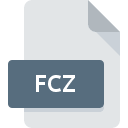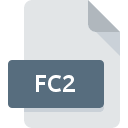.CRF File Extension

Cal3D Binary Materials File
| Developer | Cal3D |
| Popularity | |
| Category | 3D Image Files |
| Format | .CRF |
| Cross Platform | Update Soon |
What is an CRF file?
The .CRF file extension denotes a specific file format used by Cal3D, a library designed for real-time character animation in computer graphics.
The “CRF” stands for “Cal3D Resource File,” and these files are particularly important in the context of 3D animation and game development.
They store binary material data essential for rendering textures and materials on 3D models within the Cal3D framework.
More Information.
The primary aim behind the .CRF file format was to optimize the rendering pipeline within Cal3D. As 3D graphics technology advanced, there was a need for more efficient ways to handle materials and textures.
Traditional text-based formats were not always suitable due to their slower read times and larger file sizes. The .CRF format was developed to address these issues by using a binary approach, which significantly improved performance.
Initially, the .CRF files were used to store material definitions, including information about textures, shaders, and surface properties.
This binary format was chosen to streamline the loading process and reduce the computational overhead involved in parsing material data.
Over time, the use of .CRF files became integral to Cal3D’s functionality, supporting complex 3D scenes and animations in various applications, from video games to simulations.
Origin Of This File.
Cal3D is an open-source library developed by Frédéric L. Barres in the early 2000s. It was designed to facilitate the animation of 3D characters with a focus on efficiency and real-time performance.
The .CRF file extension was introduced to support Cal3D’s need for a binary format to store material properties, which are crucial for applying textures and defining the appearance of 3D models.
These files allow for the storage of complex material data in a format that can be quickly loaded and utilized by the Cal3D engine.
File Structure Technical Specification.
The .CRF file structure is designed to be compact and efficient for real-time applications. Here’s a breakdown of its typical contents:
- Header Information: The file begins with a header that includes metadata such as the version of the file format, the number of materials contained, and any other relevant data needed for parsing the file.
- Material Data: This section stores the binary data for each material. It includes information about textures, color properties, and shader parameters. The data is organized in a way that allows quick access and manipulation during rendering.
- Texture References: The .CRF file includes references to texture files used by the materials. These references are often in the form of indices or paths that link to external texture files.
- Optimized Data Structures: The binary format uses optimized data structures to ensure that material properties can be loaded efficiently. This includes using fixed-size fields and alignment to speed up the reading process.
- Padding and Alignment: To ensure data integrity and alignment, the file might include padding bytes. This helps maintain the performance of the file parsing routines and ensures compatibility with various systems.
How to Convert the File?
Converting .CRF files to other formats or versions involves using specific tools or utilities designed for Cal3D. Here are some general steps and tools you might use:
- Cal3D Utilities: The Cal3D library includes several utilities for managing and converting its file formats. These tools can often convert .CRF files to other formats supported by the library or export material data to be used in other applications.
- Custom Scripts: Developers can write custom scripts to convert .CRF files to other binary formats or text-based formats. This requires understanding the internal structure of .CRF files and the target format specifications.
- Third-Party Tools: There are third-party tools and converters available that can handle .CRF files. These tools might be part of larger 3D development suites or standalone utilities designed for file conversion.
- Manual Editing: In some cases, you may need to manually extract and reformat data from .CRF files, especially if you need to integrate the data into a different engine or application.
Advantages And Disadvantages.
Advantages:
- Efficiency: The binary format of .CRF files allows for faster loading and processing compared to text-based formats. This is particularly important in real-time applications where performance is critical.
- Compactness: Binary files are generally smaller in size than their text-based counterparts, reducing storage requirements and improving load times.
- Reduced Parsing Overhead: The structured format minimizes the need for complex parsing routines, which can streamline the development process and improve runtime performance.
Disadvantages:
- Lack of Human Readability: Binary formats are not easily readable by humans, making debugging and manual editing more challenging.
- Compatibility Issues: The .CRF format is specific to Cal3D, which can limit its use in other applications or engines that do not support this format.
- Version Dependence: Changes in the Cal3D library or file format versions can lead to compatibility issues with older .CRF files, requiring updates or conversions to ensure continued functionality.
How to Open CRF?
Open In Windows
- On Windows, you can use Cal3D’s utilities or other 3D development tools that support the .CRF format. Programs like 3ds Max or Maya, with appropriate plugins, might also be able to work with these files if they are integrated with Cal3D.
Open In Linux
- Linux users can utilize Cal3D libraries and command-line tools to work with .CRF files. Open-source 3D tools available on Linux may also provide support for Cal3D formats.
Open In MAC
- On macOS, you can use Cal3D or any compatible 3D tools that support .CRF files. If you need to convert the files, you may need to use cross-platform tools or utilities available for macOS.












